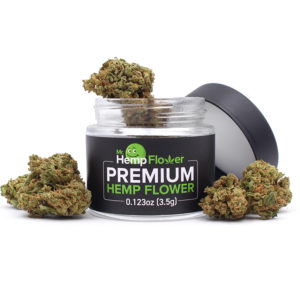Pinene – What Is It? All You Need To Know About Pinene

Pinene
ˈpīn-ēn | Noun
A primary hemp terpene with a fragrance of a pine tree. Present in two forms: alpha-pinene and beta-pinene, this terpene is also one of the most abundant in nature. Researchers are investigating the potential benefits of this terpene in inflammation and respiratory conditions.
“I feel the most relaxed when strolling through a pine forest and smoking pinene-rich hemp.”
“I can taste the pinene in my hemp pre-roll; it has a sweet pine aroma and flavor.”
What is it?
It’s a colorless, organic aromatic compound frequently found in hemp that smells a lot like a forest of pine trees. This terpene is a fragrant oil secreted in hemp trichomes — the tiny mushroom-looking “hair” that offers humans various potential therapeutic benefits. As the name suggests, this terpene is also found in pine trees and other plants like basil, cedar, dill, eucalyptus, parsley, conifer trees, rosemary, and fruits like oranges.
This terpene s commonly used in insecticides and as a flavoring agent because of its fresh earthy scent. An interesting and unusual use of this terpene is as a biofuel in spark-ignition engines. That’s because pinene dimers (a structure containing two identical or similar units) have heating values comparable to jet fuel.
What’s the difference between a-pinene and b-pinene?
These two compounds are classified as hydrocarbons, meaning they only contain carbon and hydrogen atoms. They both have the same chemical formula but different arrangements of the atoms in space, which makes them isomers. In nature, they are both found in pine tree species. As isomers, they exhibit diverse biological activities, which leads them to different applications and uses.
Where to find this terpene?
Aside from taking in the refreshing scent of pine trees during a winter walk in the forest, you may have encountered its fresh smell in your dishes. Present in basil and rosemary, if you like to cook using fresh ingredients, then you’ve tasted this terpene. Pinene oil is also found in pine nuts and lime and orange peel. So, each time you’ve used the peel of orange in your deserts or sprinkled pine nuts in your salad, you’ve come across this terpene. As a highly unattractive component to insects, it serves as an ingredient in many insect repellents.
What are the therapeutic benefits and uses of pinene?
Alpha-pinene is the predominant type of pinene in hemp and the one that offers more therapeutic benefits. This terpene acts like a potential anti-inflammatory, neuroprotective, and antimicrobial agent.
Anti-inflammatory effects
Extensive research shows the potential of plant essential oils, including those containing pinene terpene, to reduce inflammation. One 2015 study published in the American Journal of Chinese Medicine revealed that this terpene displays several anti-inflammatory properties in animal cells. Researchers concluded that it has the potential to treat various inflammatory diseases.
Another 2018 study published in Life Sciences revealed that this terpene prevents skin damage caused by UV light. This means that its anti-inflammatory effects could make this component an effective ingredient in sunscreen.
Antimicrobial properties
Researchers studied both alpha-pinene and beta-pinene for their antimicrobial effects. A 2012 study published in the journal Molecules found that this terpene is especially effective in combating Candida Albicans — one of the most common fungi in the human body that causes a ranger of issues if it overgrows.
Respiratory benefits
One 2011 study published in Molecules tested the ability of this terpene to fight infectious bronchitis virus in animal models. Researchers found that both types of pinene inhibited the cells’ viral activity, making it a potential aid against bronchitis. The study also revealed this terpene’s ability to offer relief to people with asthma by acting as a bronchodilator. This means that it has the potential to relax the muscle bands that tighten around the airways — letting more air come in and out of the lungs.
Neuroprotective benefits
In animal models of Alzheimer’s disease, scientists investigated this terpene’s potential in fighting this neurological disorder. One 2017 study published in the journal Evidence-based Complementary and Alternative Medicine found that this terpene may be beneficial against Alzheimer’s and similar disorders like dementia, amnesia, and overall memory loss.
Is it good for anxiety?
Have you ever heard about the Japanese practice of shinrin-yoku? It translates as “forest bathing” and — according to Japanese physicians and forestry experts — it involves waking through a wooded area of pine and other trees because it brings a relaxing effect on the mind and body.
To validate this practice based on plant-based medicine, the International Journal of Environmental Research and Public Health published a comprehensive review of research. The 2017 review revealed that forest bathing does affect the body positively by lowering blood pressure and pulse rates. It also has the potential to lower stress and improve overall health. Although more research is needed, pinene along other terpenes may indirectly affect stress and anxiety.
Which hemp strains contain pinene terpene?
From classic to exotic hemp strains, most of them are abundant in pinene, including:
- Special Sauce CBD Flower
- Sour Space Candy CBD Flower
- Hawaiian Haze Hemp Flower
- Strawberry Jam CBD Flower
- Mojito CBD Flower
- Harlequin CBD Strain
- Gorilla Glue Hemp Flower
- Strawberry Cake Hemp Flower
- Pineapple Haze Hemp Flower
How to recognize this terpene in your hemp strain? Well, this one’s the easiest to experience because it exhibits a strong and distinct woody scent.
Final thoughts
Praised for its sweet, pine aroma and relaxing properties, this hemp terpene may play a significant role in inflammation, neurological disorders and even serve as an option for the biofuel industry.


